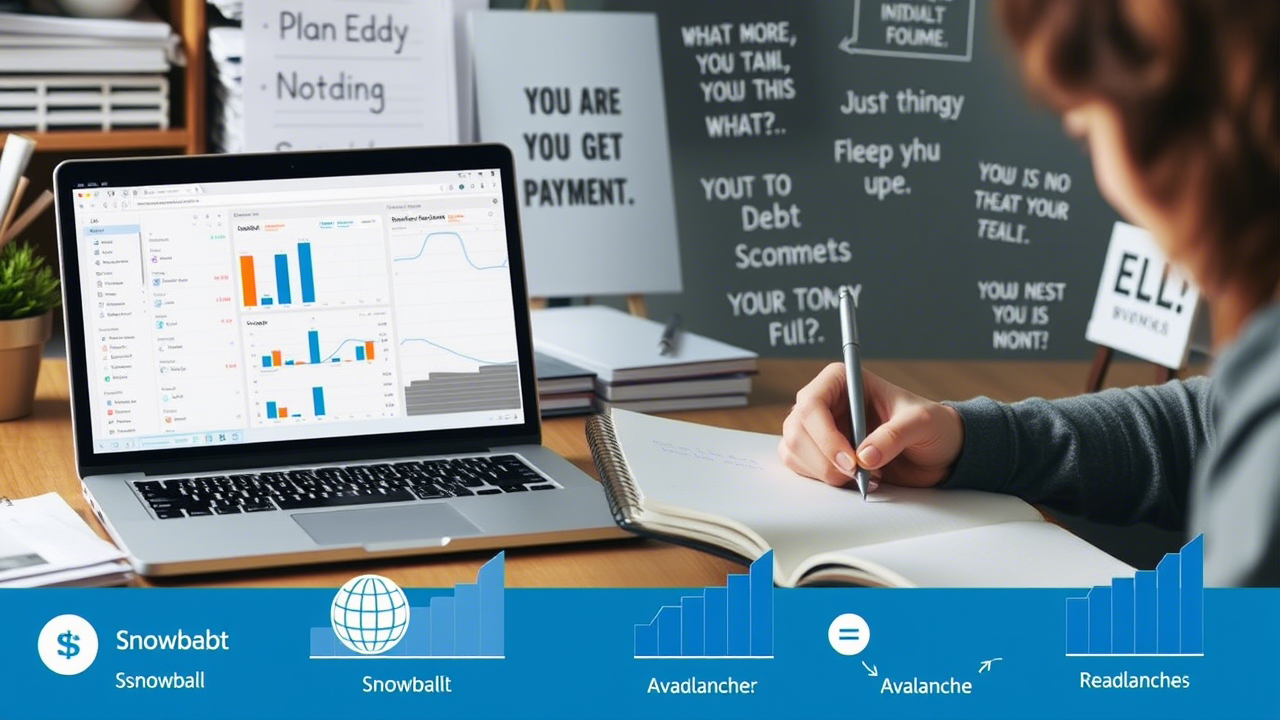How to Pay Off Debt Fast: A Step-by-Step Guide
Debt can feel overwhelming, but with a clear plan and steady progress, you can regain control of your finances. Paying off debt doesn’t have to be stressful—it’s about making intentional choices and staying consistent. In this guide, we’ll walk through practical steps to help you pay off debt efficiently while maintaining peace of mind.

Step 1: Assess Your Debt
Before creating a repayment plan, you need a full picture of what you owe. Start by listing all debts, including credit cards, student loans, personal loans, and medical bills. Note key details like the balance, interest rate, and minimum payment for each. Then, organize them by priority—either by highest interest rate (to save money long-term) or smallest balance (for quick wins). Seeing everything in one place helps you focus and track progress.
Step 2: Choose a Repayment Strategy
Two popular methods for paying off debt are the avalanche and snowball methods. The avalanche method focuses on the debt with the highest interest rate first while making minimum payments on the rest. This approach saves the most money on interest over time. The snowball method, on the other hand, targets the smallest balance first, creating momentum as you eliminate debts one by one. Choose the method that best fits your motivation style—whether you prefer saving money or seeing quick progress.
Step 3: Create a Realistic Budget
A budget ensures you have extra money to put toward debt. Begin by tracking your income and expenses using apps like Mint or YNAB, or even a simple spreadsheet. Look for areas where you can cut unnecessary spending, such as dining out, subscriptions, or impulse purchases. Redirect any savings, bonuses, or side income toward debt repayment. Even small adjustments can free up cash to accelerate your progress.
Step 4: Increase Your Payments
Paying more than the minimum is key to eliminating debt faster. Consider rounding up payments—if your minimum is 85,pay100 instead. Use unexpected windfalls like tax refunds, bonuses, or cash gifts to make extra payments. If possible, explore side hustles like freelancing, tutoring, or selling unused items to generate additional income. Every extra dollar you put toward debt shortens your repayment timeline.
Step 5: Lower Your Interest Rates
High interest rates make debt harder to pay off, so reducing them can speed up your progress. One option is transferring credit card balances to a 0% APR card if you qualify. Another is consolidating multiple debts into a single, lower-interest loan. You can also try negotiating with creditors—some may be willing to lower your interest rate if you explain your situation. Lower rates mean more of your payment goes toward the principal rather than interest.
Step 6: Stay Motivated and Consistent
Paying off debt takes time, but consistency leads to success. Celebrate milestones along the way—whether it’s paying off a credit card or sticking to your budget for a full month. Use a debt tracker or visual chart to see your progress, which can be incredibly motivating. Most importantly, avoid taking on new debt by pausing credit card use and sticking to cash or debit whenever possible.
Final Thoughts
Paying off debt is a journey, not a race. By taking deliberate steps—assessing your debt, choosing a strategy, budgeting wisely, and staying committed—you’ll make steady progress. Be patient with yourself. Small, consistent efforts add up, and before you know it, you’ll be debt-free and breathing easier. If you need help adjusting these steps to fit your situation, don’t hesitate to reach out—I’m happy to help.


